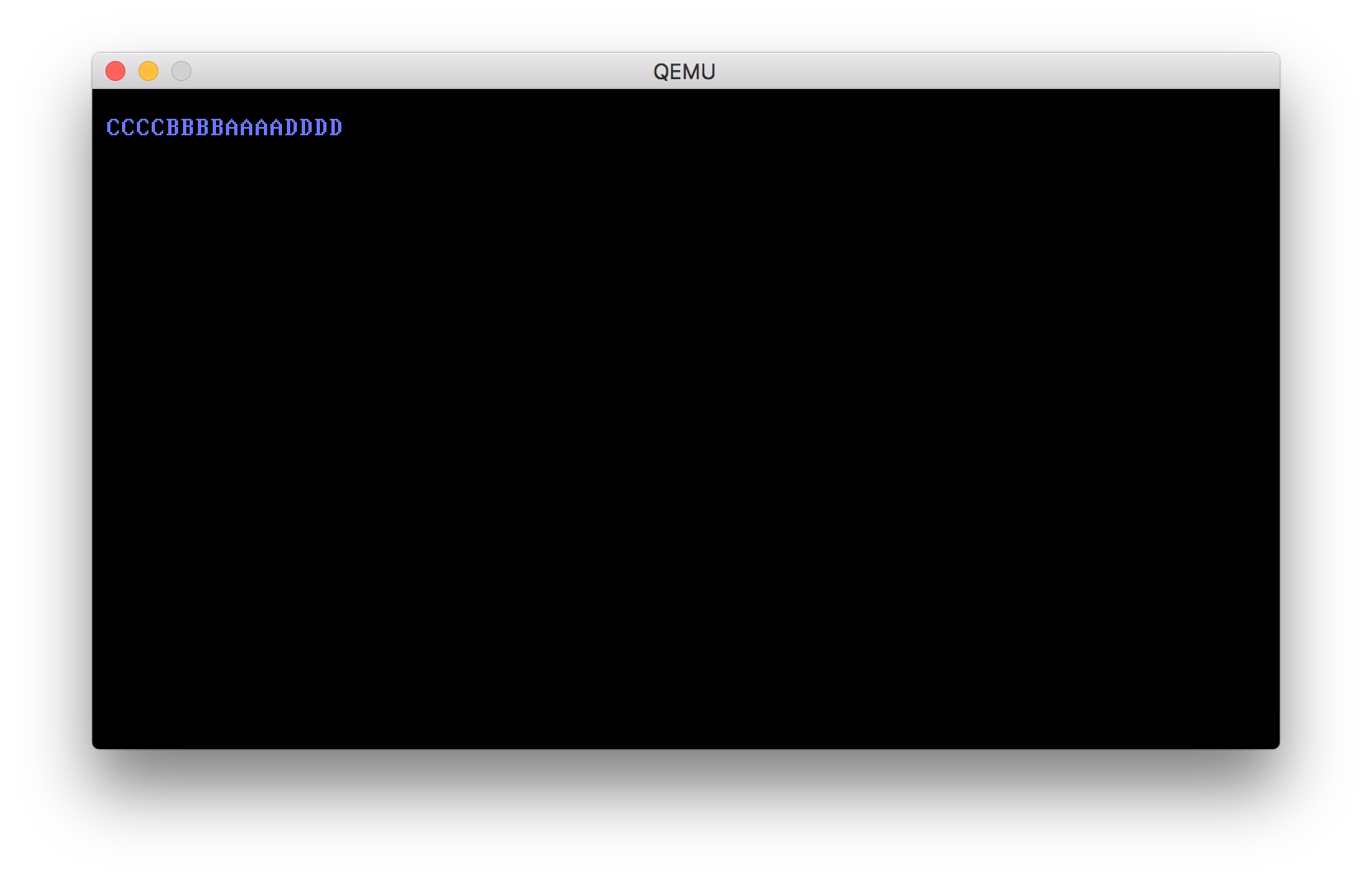It’s certainly been a while,
hasn’t it?
This is the third part
in a series
I started back in September of 2015.
After months,
this part still doesn’t cover
what it was meant to,
so this is just part Ⅰ of part Ⅲ.
Enjoy.
The real instruction, the best instruction
First,
I’d like to introduce you
to my favourite x86 instruction:
rdtsc.
This handy instruction loads
the 64-bit timestamp counter register
into edx:eax.
The register
starts at zero
and is monotonically incremented
on each clock cycle.
It may not seem immediately useful,
but it can actually be put to
a couple fun/scary uses
in a constrained environment.
Quite possibly the worst random
To implement a Tetris game,
we’ll need to spawn tetrominoes,
and they need to spawn randomly.
The actual mechanic uses a
“shuffled bag” of the seven tetrominoes
for balance.
To shuffle the bag,
we can use Fisher–Yates shuffle,
which will need an implementation of rand.
Maybe you see where this is going.
I know, rdtsc is clearly not random.
It is monotonically increasing!
The thing is,
processors are fast,
and reading the cycle count
at varying points should
produce somewhat unpredictable lower bits.
Those lower bits could certainly be used
to seed some sort of pseudo-random number generator,
but that’s more work than it’s worth.
Let’s just use modulo.
Rand
The rand function will take
a double-word range parameter
and return a “random” number n,
where 0 ≤ n < range.
It won’t need to bother with ebp,
so can load the range directly from [esp + 4].
rand:
rdtsc
xor edx, edx
div dword [esp + 4]
mov eax, edx
ret
Before dividing the cycle count,
edx is zeroed to prevent overflow exceptions.
The div instructions leaves the remainder in edx,
so that is returned.
Shuffle
The shuffle function will take two parameters.
The first will be a double-word address
of the first word in an array of words,
and the second will be the double-word length of the array.
It will shuffle arrays of words
since tetrominoes will later be represented as such.
The function begins by loading
the address of the array into ebx,
and the index of the last element into ecx.
shuffle:
push ebp
mov ebp, esp
push ebx
mov ebx, [ebp + 8]
mov ecx, [ebp + 12]
dec ecx
In a loop,
rand is used to get
a random index between 0
and ecx inclusive.
.loop:
lea eax, [ecx + 1]
push eax
call rand
add esp, 4
In order to pass ecx + 1 to rand,
the “load effective address” lea instruction is used.
This is a common trick for doing
certain arithmetic operations in a single instruction.
The values at the current index ecx
and the random index eax
are then swapped,
using dx as a temporary.
mov dx, [ebx + ecx * 2]
xchg dx, [ebx + eax * 2]
mov [ebx + ecx * 2], dx
loop .loop
The loop continues,
decrementing ecx each time.
When the loop completes,
the array has been shuffled in-place,
and the function simply returns.
pop ebx
mov esp, ebp
pop ebp
ret
The full implementation can be found in random.asm.
Proof that it works
Using functions
from previous parts of the series,
we can build a small test
that shuffles an array of 4 words
on each key event.
section .data
array dw 0xAAAA, 0xBBBB, 0xCCCC, 0xDDDD
section .text
main:
push word BG.BLACK | ' '
call clear
.loop:
call scan
test al, al
jz .loop
push dword 4
push array
call shuffle
push word 0x1008
push dword [array]
call itoa
push dword 0x0101 << 16 | FG.BRIGHT | FG.BLUE
push eax
call puts
push word 0x1008
push dword [array + 4]
call itoa
push dword 0x0109 << 16 | FG.BRIGHT | FG.BLUE
push eax
call puts
add esp, 36
jmp .loop
And hopefully the array
will be shuffled differently
each time.

In the distant future…
At some point,
there will be a post
covering actual timing
using rdtsc.
It will be terrible
and wonderful at the same time.
Oh, and eventually we’ll
make an actual Tetris game.
Almost forgot.